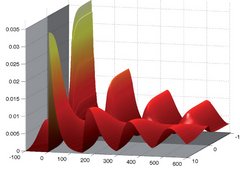Friday, 20 August, 2010
Road signs and traffic signals on DNA
Physical model describes the distribution of nucleosomes
The DNA genomes of organisms whose cells possess nuclei are packaged in a highly characteristic fashion. Most of the DNA is tightly wrapped around protein particles called nucleosomes, which are connected to each other by flexible DNA segments, like pearls on a necklace. This arrangement plays a major role in deciding which genes are actively expressed, and thus which proteins can be synthesized in a given cell. The LMU Munich biophysicists Professor Ulrich Gerland and Wolfram Möbius have recently developed a model which explains the distribution of nucleosomes around the functionally crucial transcription start sites. Transcription is the first step in the process that converts genetic information into proteins. At the transcription start sites the DNA must be free of nucleosomes. The two researchers discovered that distinct stop signals positioned on either side of these zones must actively prevent the formation and sliding of nucleosomes. Our model provides a useful tool for dissecting the so-called chromatin code, which determines how the DNA is packed and selectively made accessible for transcription, says Gerland. (PLoS Computational Biology, 19 August 2010)
Presseinformation der LMU (deutsch)
Press information LMU (english)
Publication "Quantitative test of the barrier nucleosome model for statistical positioning of nucleosomes up- and downstream of transcription start sites"


